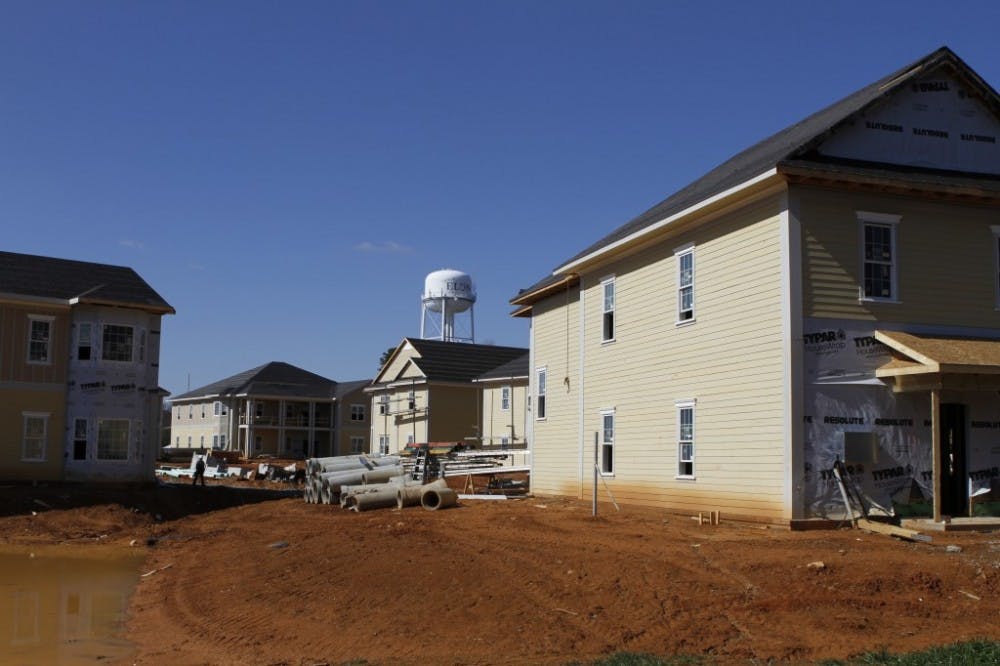With upperclassmen taking advantage of the opportunity to live in The Station at Mill Point, a new on-campus housing option available only to juniors and seniors, many students now find themselves with no place to live next year.
Juniors and seniors who wanted to live on campus completed phase one of the housing selection last week. According to Niki Turley, assistant dean of students, roughly 60 juniors and seniors were put on the waitlist, although Turley said this is consistent with years past.
The regular cap for the number of juniors and seniors living on campus has been met, and The Station filled up after the first time slot in phase one for juniors. Juniors who signed up after the first time slot found there was no longer any on-campus housing available for them.
“My three roommates and I were trying for The Station at Mill Point and the Oaks was our second choice,” Hart said. “I thought we would have a good chance at getting into either, however when I registered, it said that all housing was filled up, so we ended up with no where to live on campus.”
[box][poll id="5"][/box]
Hart said she and her roommates were put on the waitlist, but does not feel that there will be any openings in either The Station at Mill Point or the Oaks and are worried they are running out of time to find someplace to live off campus.
“Now, we are looking at places off campus for four people, and we are most likely going to live at Provence apartments,” Hart said. “I wish that Residence Life would have respected our desire to stay on campus, because I don’t think it is fair that we are being forced off of the university housing, while many rising seniors are able to get back on campus to live in Mill Point after living off campus last year.”
MarQuita Barker, associate director of Residence Life operations and information management, said almost the same number of juniors as seniors are living in The Station at Mill Point next year.
“Mill Point did fill up quickly,” Barker said. “It’s new and it’s entirely for (rising) juniors and (rising) seniors so there is no competition from (rising) sophomores.”
Turley said in the past, Residence Life has been able to provide housing for everyone on the waitlist, but that it takes time to complete this process. In the meantime, Residence Life is trying to connect with the students and provide information and support.
Current sophomores hoping to get into The Station at Mill Point were frustrated by the large number of rising seniors choosing to live on-campus next year. Sophomore Julie Hart was surprised at how quickly The Station filled up.
But sophomore Ashley Meerbergen said it is lack of communication that has been the most frustrating for her. Meerbergen registered for housing in the first junior time slot, but said all the housing was full when she signed in to register.
She said the main reason she wants to live on campus next year is because her roommate pays for housing through student loans, and if they have to move off campus her roommate will be forced to pay out of pocket. Meerbergen said she was told that because her roommate pays for housing in this way, it could affect their place on the waitlist, but doesn’t know if that is fair for those students with earlier time slots.
In an email sent out by Residence Life on Monday to juniors and seniors on the waitlist, Director of Residence Life Elaine Turner informed the students that Residence Life was currently unable to house all of the students requesting to live on campus, which is why they are continuing to build more campus housing.
Turner acknowledged there were several students who were unable to select a space on campus during the housing selection process for rising juniors and seniors despite the fact that the number of available spaces for rising juniors and seniors was the same as last year.
According to the email, students can now access the waitlist via OnTrack and add their names to the building(s) on campus, which they would like to be waitlisted for. The process for pulling students off the wait list will begin in mid-March and continue as cancellations are made.
Turley said this is a transitional year for housing, and because of that, more rising sophomores will be living in the Oaks because Moffit and Staley are being torn down at the end of the school year.
“We tore down 300 beds last year and we are going to tear down 300 more with the Moffitt and Staley to build the Global neighborhood,” Turley said. “After that, the Oaks will be mainly juniors, sophomores will live in the Danieley Center, Colonnades and the Global neighborhood and first years will live in the historic (East and West) neighborhood.”
The Global neighborhood will be completed in 2014, but in the mean time, rising juniors on the waitlist said that not being able to return to where they currently live is unfair.
“I almost understand the housing shortage, but the fact that I can’t even stay where I am is infuriating,” sophomore John Bowden said. “I would think upperclassmen would get priority over underclassmen, but it feels like the (rising) junior class is being shunted around while good housing goes to everyone else.”
The email also said Residence Life hopes to help as many students as possible find housing. They have contacted some local apartment complexes to offer more expanded housing on the university’s shuttle route and have a list of local apartments for students who wish to look for housing on their own. They are also working with SGA to bring local realtors to campus for a housing fair.
Turner wrote that Residence Life will provide students with details on these options by March 1.


